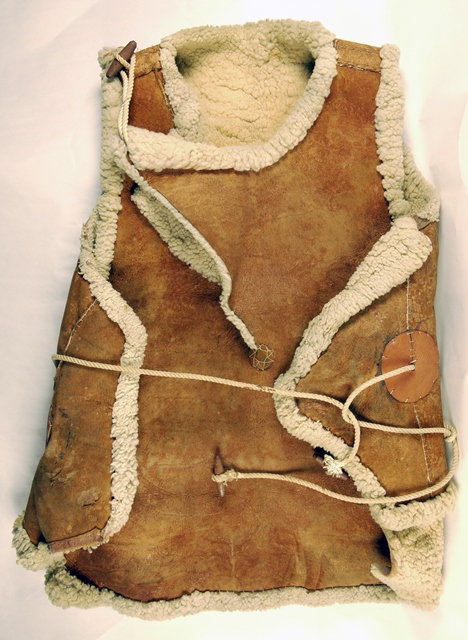Seventy years on

College Library collections are full of artefacts, some acquired with book or manuscript collections, some coming to the Library for want of a more obvious home. They are often the last things to be catalogued; their historical and cultural importance is not always fully recognised. This worn and smelly sheepskin fleece or jerkin, presented with the papers of the eminent astrophysicist Sir Fred Hoyle by his widow in 2002, is an excellent example. At first sight it certainly lacks the glamour and the beauty of medieval manuscripts and handsome folios.
But appearances can sometimes deceive. This fleece was worn seventy years ago, on Boxing Day 1943, by Vice Admiral Sir Bruce Fraser, Commander in Chief of the Royal Navy’s Home Fleet. Fraser had need of its warmth. Sailing on his flagship HMS Duke of York, in the icy darkness of the polar night, he was engaged in a fierce naval battle off Norway’s North Cape, grappling with one of the most formidable battleships in Hitler’s Navy, the Scharnhorst. Following a hunch – and guided by good intelligence – Fraser was convinced that the Scharnhorst would attack a particular convoy of allied merchant ships supplying the Soviet Union via Murmansk and the White Sea ports. He was right. Duke of York and her escorts intercepted the enemy and attacked with torpedoes and gunfire, assisted crucially in the darkness by then very new radar. The Scharnhorst sank at 7.45pm. Thirty-six men survived, from a crew of 2000. Like the sinking of the Bismarck in 1941, the destruction of the Scharnhorst was exploited by the British as a symbol of Allied Naval dominance, of good seamanship, and of technological superiority over the German foe.
The jerkin was presented to Hoyle by the actor and theatre manager Bernard Miles, who had himself co-starred in the classic Second World War naval film In Which We Serve. Hoyle, in a note recording the donation, recalls a story told of events that night in 1943. Fraser was watching the radar scan at the moment the blip representing Scharnhorst disappeared. ‘Just like the bloody radar to fail at a moment like this’, he exclaimed, apparently not realising that the ship had gone down.
This Special Collections Spotlight article was contributed on 8 November 2013 by Mark Nicholls, Librarian.